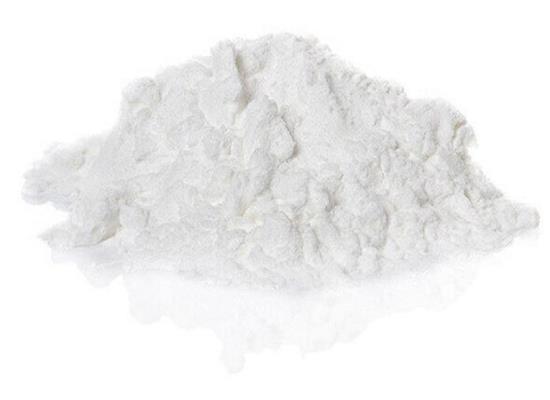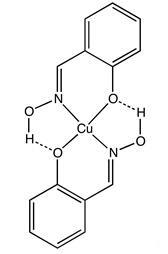Salicylaldoxime: activities, applications and safety
General Description
Salicylaldoxime is a chemical compound that has been found to inhibit immune hemolysis by selectively targeting the interaction between EAC'1,4,2 and C'3. It demonstrates inhibitory activity without reversible effects by divalent cations. Additionally, Salicylaldoxime derivatives show promise as carbonic anhydrase inhibitors, offering an alternative to sulfonamide-based inhibitors. These compounds have a unique zinc binding group and can interact with the catalytic zinc ion of carbonic anhydrases. This opens up opportunities for developing improved therapeutic agents for conditions like glaucoma, osteoporosis, and epilepsy. However, it is important to note that Salicylaldoxime poses safety concerns, including skin and eye irritation, harm if swallowed, and potential target organ toxicity with repeated exposure.

Figure 1. Salicylaldoxime
Activities
Salicylaldoxime has been found to inhibit the haemolysis of sheep erythrocytes by antibody and complement in both guinea pigs and humans. It exhibits a distinct mechanism of action compared to previously described inhibitors like ethylenediaminetetraacetic acid and diisopropylfluorophosphate. Specifically, salicylaldoxime selectively inhibits the reaction between the intermediate complex EAC'1,4,2 and C'3, which is involved in immune haemolysis. This inhibition is not reversible by divalent cations. The inhibitor must be present throughout the reaction process to be effective. Adding the inhibitor to complement and then removing it through dialysis, or adding it to red cells or EAC'1,4,2 and removing it through centrifugation, does not impair haemolysis. Based on experimental evidence, it is suggested that salicylaldoxime works by preventing the effective combination of C'3 with EAC'1,4,2, rather than by destroying C'3 itself. In summary, salicylaldoxime demonstrates inhibitory activity against immune haemolysis by specifically targeting the interaction between EAC'1,4,2 and C'3, without reversible effects by divalent cations. 1
Applications
Salicylaldoxime derivatives have emerged as a promising class of carbonic anhydrase inhibitors, providing an alternative to the commonly used sulfonamide group. These compounds contain a unique zinc binding group, enabling them to interact with the catalytic zinc ion of carbonic anhydrases and exhibit inhibitory effects. Computational studies have revealed that the salicylaldoxime moiety binds to the zinc ion through its oxime oxygen atom while also forming a hydrogen bond with specific residue T199. This knowledge has opened up new avenues for the development of improved CA inhibitors by optimizing the salicylaldoxime moiety's structural interactions. The findings suggest that the salicylaldoxime system could be utilized to create more effective therapeutic agents targeting carbonic anhydrases. Consequently, these studies offer significant potential to improve the treatment of diseases like glaucoma, osteoporosis, and epilepsy, where carbonic anhydrases are involved in the pathogenesis. Further research is required to optimize these compounds to enhance their efficacy as potential therapeutic agents and evaluate their safety and toxicity before clinical application. Overall, the development of salicylaldoxime-based carbonic anhydrase inhibitors offers a promising approach to treat diseases associated with this enzyme. 2
Safety
Salicylaldoxime is a chemical compound that exhibits several safety concerns based on its reported properties. It has been identified as a skin and strong eye irritant. This suggests that direct contact with the compound may cause irritation to the skin and eyes, respectively. Additionally, Salicylaldoxime is classified as Harmful if swallowed and Acute Tox, indicating that ingestion of this compound can be harmful to health. It may cause irritation in the respiratory system, leading to respiratory discomfort. Furthermore, the compound has been classified as STOT SE 3, suggesting that it may have specific target organ toxicity with repeated exposure. This implies that prolonged or repeated exposure to Salicylaldoxime may cause adverse effects on certain organs. In summary, Salicylaldoxime possesses various safety concerns. It can be harmful if ingested, causes skin and eye irritation, and may lead to respiratory irritation. Prolonged exposure may also result in target organ toxicity. Therefore, proper precautions, such as the use of personal protective equipment and adherence to handling guidelines, should be taken when working with or around this compound to ensure the safety and well-being of individuals. 3
Reference
1. MILLS SE, LEVINE L. The inhibition of immune haemolysis by salicylaldoxime. Immunology. 1959 Oct;2(4):368-383.
2. Tuccinardi T, Bertini S, Granchi C, Ortore G, Macchia M, Minutolo F, Martinelli A, Supuran CT. Salicylaldoxime derivatives as new leads for the development of carbonic anhydrase inhibitors. Bioorg Med Chem. 2013 Mar 15;21(6):1511-1515.
3. PubChem. Salicylaldoxime: Safety and Hazards. National Library of Medicine, 2019, CID: 135408751.
);You may like
Related articles And Qustion
See also
Lastest Price from Salicylaldoxime manufacturers

US $0.00/KG2023-09-05
- CAS:
- 94-67-7
- Min. Order:
- 1KG
- Purity:
- 99%
- Supply Ability:
- 50000KG/month

US $8.90/KG2023-01-10
- CAS:
- 94-67-7
- Min. Order:
- 1KG
- Purity:
- 99%
- Supply Ability:
- 10 mt




